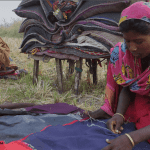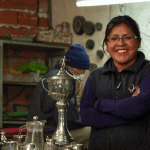The Tech Revolution in Financial Inclusion is Excluding Last-Mile Customers: Here are Four Ways to Reach Them
The world is experiencing a surge in internet access, with almost 300 million new users in 2019, for a total of 3.5 billion, according to GSMA’s 2019 State of Digital Connectivity. This growth is happening especially in developing countries – and it’s accompanied by the consolidation of fintech ecosystems around the globe. As a result, technology is increasingly supporting financial inclusion efforts: Every day providers use more apps, more digital marketing and more fintech to provide solutions to those who are excluded. But at the same time, in stark opposition to this trend, we see communities where this access is both unreliable and unevenly distributed. In these communities it’s common to hear the phrase: “Go to that pole and see where you get a signal!” – because mobile connectivity is, at best, irregular.
This lack of reliable access has serious repercussions: According to the 2016 World Development Report, even though digital technologies are rapidly expanding throughout the developing world, the digital dividends (greater growth, more employment or better public services) are below expectations and 60% of the world population still cannot participate in the ever-expanding digital economy. So, as technology becomes increasingly essential to our work, what can the financial inclusion sector do to ensure that its benefits are equally distributed?
Fundación Capital helps improve the financial lives of millions living in poverty around the world. We design and deliver solutions that make families more financially resilient, and work with governments and banks to create economic opportunities. Since 2012, we’ve been developing digital solutions to reach those excluded from financial systems. These tools have helped us become a social enterprise, as with time, we have been able to license them to a growing base of customers, and even to make digital solutions for other organizations. Here we’ll explore the four most important lessons we’ve learned about creating digital financial inclusion solutions for last-mile customers.
Choosing to Go Offline for Financial Capability Training
Our first digital finance tool was LISTA, a pioneer financial capabilities training app. We normally use person-to-person (P2P) channels to reach our final users (e.g.: community leaders in government programmes who circulate the app-based training via tablets, among the participants of said programmes). More recently, we’ve also used business-to-person (B2P) channels, like microfinance institutions, to diversify our client-base and revenue streams. LISTA’s value proposition to partners and stakeholders is our ability to decrease marginal costs per additional trained user: this makes the solution cost-efficient and scalable, with more than half a million people reached in seven years. In 2013, we also developed Apptitude, an app to coach people in livelihoods enhancement programs for the ultra-poor. Its contents go far beyond financial education and include self-esteem promotion, nutrition information, business capabilities and more. In contrast to LISTA, which is a self-learning app, Apptitude is used by coaches (paid either by Fundación Capital or other stakeholders) as support when they visit and train participating households.
When the LISTA app was developed in 2012, it only worked online, instead of offline as it does today. It may seem counterintuitive to make this change, in the age where so much of our work revolves around the internet. But – as is common in innovation processes – in-field implementation required us to modify our project design.
In the beginning, based on insights from behavioral economics, the LISTA strategy offered a two-pronged approach to financial capabilities training: the app itself, and one-way SMS messages that worked as nudges to continue reviewing the learning modules of the app. Users also received text messages after they had finished, reminding them of key content. This process required an internet connection, because the server where LISTA’s data was stored needed to know when a user completed a module or the whole app, in order to trigger the message deliveries.
However, low connectivity in peri-urban and rural areas in central Colombia, where we launched the project, made it difficult for data to synchronize, in many cases resulting in poor user experience. Some users, for example, could not access the app because it had too much data for their low-bandwidth internet connections to synchronize. In other cases, users had finished all five modules of the app and only hours or days later did they receive the messages congratulating them on finishing each module and encouraging them to continue with the rest. All these issues were caused by insufficient internet connection.
Despite this user experience, the app was well-rated by the target audience, which proved our hypothesis that an application to enhance financial capabilities at the bottom of the pyramid was an effective tool. Nevertheless, it was important to question the suitability of our two-pronged approach. After careful consideration, we decided that online connectivity was unnecessary, and in 2013 we chose to make LISTA an offline app. Even with better internet access six years later, this choice still remains valid, as LISTA’s users still have limited internet access.
High-Tech, High-Touch Financial Inclusion Approaches
LISTA’s P2P strategy is rooted in Fundación Capital’s motto that the best teachers of the poor are the poor themselves. In the case of LISTA, this teaching came by putting high-tech tools in the hands of leaders in poor communities, allowing them to provide training to their peers. Qualitative evaluations carried out in Mexico and Colombia point to the success of LISTA’s “high-tech, high-touch” approach, because the human element is present in the whole user experience of a LISTA user. A regular user gets access to LISTA through their community leader in one of two ways: either in their own home or at the community leader’s home. This makes the beginning of the LISTA experience highly personal. Furthermore, a tablet lent by a peer is perceived as an immense sign of trust. Reports from the field have also indicated that LISTA has given users an opportunity to reconnect with others – and even to start joint business ventures (like bread-making and shop-keeping). All of this gives LISTA its “high-touch” element which, coupled with its high-tech characteristics, has proven to be fundamental to its impact.
We saw this in practice when we made the difficult decision to change LISTA’s distribution model to allow direct download of the app into users’ smartphones. This change was suggested by donors and partners, and also within the Fundación Capital team, as the smartphone channel intuitively seemed like the best solution given the market penetration of these tools. However, pilots with LISTA via smartphones have been less successful, because they lack the “high-touch” element that has made the program so effective. We now believe that a combined solution is necessary, in which people get LISTA via a tablet through their community leader, and then get additional practice-oriented content designed for the smartphone interface.
Consistent Financial Coaching through Digital Means
One of the reasons Fundación Capital decided to digitise financial capability training through tools like LISTA was to ensure that all users receive the same quality of training. When we delivered traditional in-person training, evaluations showed that there were often differences in the capabilities of the trainers, which meant that some project participants got better training than others. We saw that if content could be developed digitally, then all users would receive the same information, ensuring the communication and retention of the key takeaways for which Fundación Capital and its partners were designing the content.
Having this digitised content as a starting point redefined the role of trainers and made them coaches. This was the case specifically with Apptitude: Coaches became an important added-value to the training process, as they could give more information and emotion on top of the basic knowledge provided by the apps. Similar to the “high-tech, high-touch” approach, these coaches have facilitated learning by customising the standard lessons from the app according to users’ specific realities. This in turn meant that they could use their time for more than just training, providing additional mentoring and coaching to the users.
Developing Digital Financial Solutions for Diverse Cultural Backgrounds and Languages
Fundación Capital has developed digital solutions in six languages for 13 countries, mostly in Latin America and the Caribbean, but also spanning Africa and India. Language is not a barrier to creating digital solutions at a “glocal” scale. However, it requires meticulous organization – and teams that can both translate local needs into training content, and convert training content into digital structures that are standardised for every digital solution.
It is usually the most excluded communities that help the world maintain its cultural heritage, as they preserve local languages and cultures. However, when it comes to providing them with financial capability training through digital solutions, creating content in their mother tongue can be costly and difficult to scale. Mozambique, for example, has more than 40 local languages, and Portuguese is the main language. So LISTA’s Mozambique version in Portuguese can easily be used with half the country’s population – but in order to reach the most excluded, especially women in rural areas, the app needs to be translated into local languages (a goal we have yet to achieve).
As we continue to develop relevant digital solutions, we will continue to discover opportunities and face challenges. There are endless possibilities to include marginalized communities in the technology revolution in financial inclusion. But to keep the digital gap from growing and even reduce it, we must remember the last mile, and provide them with relevant solutions.
Rodrigo de Reyes is Director of Research and Digital Solutions and Mauricio Romero is in charge of evaluation and research activities at Fundación Capital.
Photo courtesy of organization.
- Categories
- Finance, Technology



